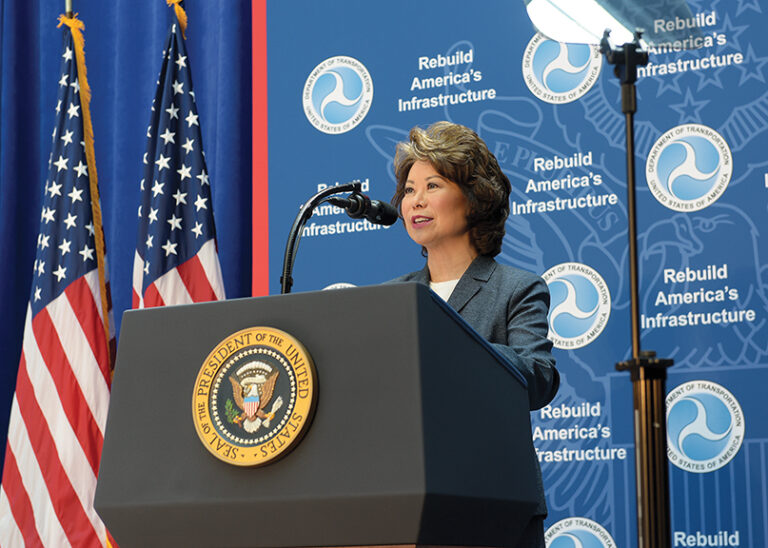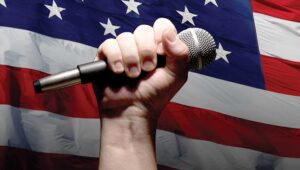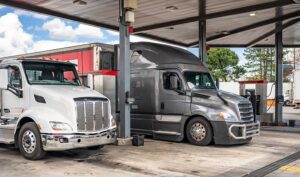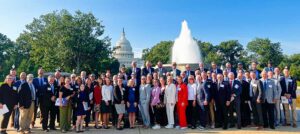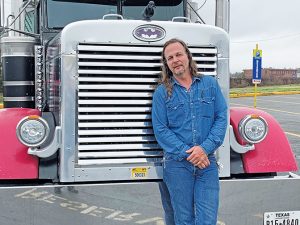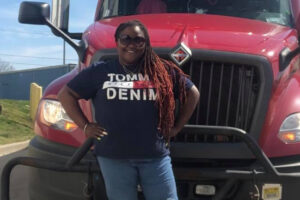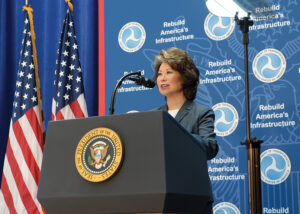The U.S. Department of Transportation (DOT) Secretary Elaine L. Chao is one of seven members of the Cabinet who has served the entire four years of the Trump Administration. Of the seven, she is one of the most highly visible, because transportation issues touch the lives of virtually every American each day. She is in her second stint as a member of a presidential Cabinet, having served as Secretary of Labor under George W. Bush. A testament to her work ethic is that she was the only member of the Cabinet to serve for the entirety of Bush’s term. She is the first Asian-American woman to be appointed to a presidential Cabinet in American history, having immigrated to the U.S. at age 8 and becoming a U.S. citizen roughly 11 years later.
As Transportation Secretary, she has become known as a strong advocate for safety and the importance of infrastructure and innovation in the nation’s economic competitiveness and growth.
Chao came to the DOT with extensive experience in the transportation sector. Early in her career, she specialized in transportation financing for private businesses. She began her executive career in public service working on transportation issues at the White House. She then served as Deputy Maritime Administrator, Chairman of the Federal Maritime Commission; and Deputy Secretary of the DOT.
Secretary Chao recently took time to answer questions as posed by Wendy Miller and Lyndon Finney about her term in office and the issues she has faced in the past four years.
You were born in Taipei, Taiwan, and at age 8 immigrated to the U.S., where your father had immigrated three years prior. What did it mean to you to become an American citizen, and did you ever dream that you would be asked to serve in key positions in the federal government?
My parents overcame tremendous challenges to make a better life for their daughters in this country. They had a deep faith in the basic goodness and kindness of the American people and the opportunities that would be available to their daughters. My father was one of the youngest ship captains of his time at the age of 29. He scored No. 1 in the national examinations and had the chance to go study in the U.S. He went first to pave the way for us. My mother was seven months pregnant at the time with their third child. It took my father three years before he could afford to bring my mother, my two sisters, and me to America. It was very difficult at first. We didn’t speak the language, didn’t understand the culture. Our little family of five lived in a small apartment in Queens, New York. Through all the difficulties, we were rich in the things that mattered most — family, faith, and hope for a better future.

Growing up, we were always encouraged to expand our horizons and work toward opportunities that would improve our lives. When I was younger, I would keep in my desk drawer a photo of the humble village my father came from in China. Whenever I encountered difficulties, I would take out this photo and remind myself that if my father could surmount all the obstacles he faced, as his daughter, so could I. I didn’t get my citizenship until I was 19 years old. When I finally obtained my citizenship, it was as if I had been holding my breath waiting for this moment, and I could finally exhale knowing that I was officially a citizen of this wonderful nation that had felt like home for 11 years. If someone had predicted that I would one day be in the Cabinet, I would not have believed it.
After you received your MBA, you became highly successful in the private sector. First, had you ever given any thought to becoming part of the public sector before being asked by President Ronald Reagan to help the White House with transportation issues? Second, why did you say yes?
Early in my career, I was a banker at Citicorp specializing in transportation financing. I happened to get involved in Title 11 financings for the U.S. maritime industry, which would prove to be very helpful later in my career. When I worked on government loans, it would take months to close and involve reams of documents and a roomful of government lawyers. I couldn’t understand how the government could help people when it was so bureaucratic.
But, I wanted to learn more about the government of my new country — so that led me to apply for the White House Fellowship. That was the first step in a career in public service. When I look back upon my government service, I hope that I have made a difference in improving the lives of residents and citizens of this country.
When President Trump asked you to become Secretary of Transportation, first, was there any hesitation in saying yes, and second, what did he tell you he wanted to achieve in transportation over the next four years?
Our country’s transportation infrastructure is the underpinning of our world-class economy. It’s a key factor in productivity, and it has provided us with unprecedented mobility, safety, and security.
President Trump understood that these gains were jeopardized by deteriorating infrastructure, the specter of rising highway fatalities, growing congestion, and a failure to keep pace with emerging technologies. I am honored to have the chance to serve our government during this historic time.
Over the last four years, the department has played a key role in modernizing our transportation systems and strengthening our country’s competitiveness. We’ve worked to rebuild, refurbish, and revitalize America’s infrastructure, so our economy can continue to grow, create good-paying jobs for America’s working families, and enhance our quality of life.
You served as deputy Secretary of Transportation under President George H.W. Bush in the late 1980s and early 1990s and now are the 18th Secretary of Transportation under President Donald Trump since January 31, 2017. In what ways has the department matured in terms of responsibility and credibility?
America’s transportation system continues to expand and advance to meet the needs of our growing country — especially in the commercial transportation sphere. With the growth of e-commerce and Americans having more packages delivered to their homes than ever before, the trucking industry plays a significant role in the livelihoods of millions of Americans. The Federal Motor Carrier Safety Administration (FMCSA) was established in 2000, following the enactment of the Motor Carrier Safety Improvement Act of 1999. Since then, FMCSA has focused on fulfilling its critical safety mission of reducing crashes among large trucks and commercial buses.
With 12 million large trucks and buses on the nation’s roadways, FMCSA continues to advance in its initiatives and capabilities to promote safety. Under this administration, the agency has modernized hours-of-service rules to improve safety and add flexibility for drivers, as well as launch a new Drug and Alcohol Clearinghouse, which has already detected more than 38,000 positive abuse tests and kept dangerous drivers off the road. At the same time, the agency has been working closely with the industry on promoting the voluntary use of new driver-assistance technologies — like automated braking and automated warning systems — that have the potential to reduce crashes and save lives. While these are positive developments, the department will continue to look at new ways and new efforts to reduce crashes and promote safety on America’s roadways.
For the most part, when the public hears the term Department of Transportation, they think of cars, trucks, buses, and highways. But today’s DOT is much more. How would you describe the role of your department in keeping this country moving forward?
Our top priorities at the Department of Transportation are to keep the traveling public safe and secure, improve their mobility, and have our transportation system contribute to the nation’s economic growth. That includes cars, trucks, buses, and highways — but it extends far beyond that to ports, freight rail, passenger rail, transit, airlines, airports, U.S. flagships, commercial space, and pipelines.
Our efforts are guided by three priorities. The first is safety, which is always our North Star. The second priority is rebuilding and refurbishing our country’s critical infrastructure. Every day, the department works with states to ensure that billions of dollars of federal funds are focused on improving transportation system performance and project delivery. The third priority is preparing for the future by engaging with emerging technologies to address legitimate public concerns about safety, security, and privacy, without hampering innovation. Under this administration, we’ve worked to position the federal government as a catalyst for safe, efficient technologies, not as an impediment.
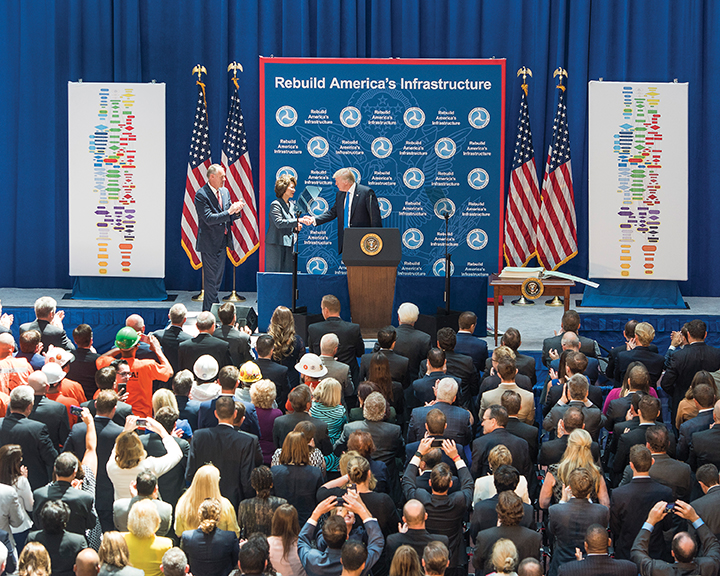
Turning specifically to trucking, share your opinion on why the trucking industry is so important to the American economy and the American consumer.
America’s trucking industry lies at the heart of our economy. We depend on it to move our nation’s freight safely and securely. The American Trucking Associations valued trucking as a $791.7 billion industry last year, representing 80.4% of the nation’s freight bill.
The crucial role America’s truckers play in the supply chain took on special significance during the COVID-19 pandemic. Mile after mile, truck drivers played a heroic role in helping America cope, and will play an important part in helping our economy resume strong growth once this crisis is behind us.
Across the board, this administration is fighting every day on behalf of America’s trucking industry. Over the last four years, we’ve implemented significant hours-of-service reforms to improve safety and increase flexibility for commercial vehicle drivers. We’ve improved regulatory efficiency and done away with mountains of bureaucratic red tape — working to eliminate 11 regulations for every new one put on the books, saving the economy and consumers more than $93 billion. We’ve unveiled the first-ever National Freight Strategic Plan to strengthen America’s economic competitiveness. And we’ve invested billions of dollars annually in infrastructure projects to support a strong, modern transportation network.
Additionally, public comment has recently been requested on a new pilot program to gather and analyze data to gauge the safety and feasibility of additional modifications to the hours-of-service rules. Why is it important to continue to evaluate the need for additional flexibility in the rule?
In August, the department announced that it would be seeking public comment on a pilot program to allow additional hours of service regulatory relief by allowing participating drivers to pause their on-duty driving period with one off-duty period up to three hours. This pilot program — scheduled to operate for three years or less — will gather evidence to analyze the safety and feasibility of such a modification.
This program is just another step the department is taking to explore ways to improve safety on our roadways, while increasing flexibility for truckers.
With your service as Secretary of Labor and Secretary of Transportation, you are a role model for young girls and women. What are some of the lessons you’ve learned and advice you have for succeeding in the “hardball” environment of male-dominated, senior leadership in DC?
When I was starting out in my career, women were something of a novelty in the upper levels of government and the private and nonprofit sectors. Asian-American women were rarer still. Each day, I tried to do what was asked of me with enthusiasm and resourcefulness. It’s been my experience that if you do a good job, people take notice. The transportation sector is still very male-dominated today. I’ve always been a strong advocate for more inclusion of women and other under-represented communities in this sector.
I always advise young women to love what they’re doing and never give up. This country promises endless opportunities and possibilities. So long as you have a dream, work hard, and remain determined — good things will happen.
Wendy Miller holds a bachelor’s degree in journalism and a master’s degree in strategic communications. Wendy has been a journalist and editor for nearly 15 years and has specialized in niche publications for the past eight years. Wendy draws her love for the trucking industry from growing up as a trucker’s daughter.







